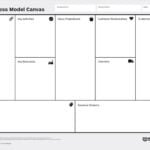
Imagine this situation: suddenly, the employee with the most competencies in a particular area or process of your company decides to resign. If you’ve taken the necessary precautions, such as having another employee with similar skills, this decision shouldn’t affect the company’s activities, as you would have alternatives to replace them. But what if that’s not the case? Obviously, you’re in trouble. How can you avoid this situation?
The answer lies in implementing knowledge management processes within your company to ensure that the knowledge created isn’t lost when an employee leaves.
Knowledge management (KM) has become a cornerstone of modern organizations, driving innovation, improving decision-making, and maintaining a competitive edge. With the rapid expansion of information in the digital age, managing knowledge effectively is more crucial than ever.
This article will delve into various aspects of knowledge management in companies, including the different types of knowledge, the tools and systems used to manage it, and the challenges and benefits associated with implementing a knowledge management strategy to enable your company to innovate and create competitive advantages.
Definition of Knowledge Management
The current era is considered the knowledge era, as the success of organizations fundamentally lies in the proper management of intangible resources (Passaillaigue and Estrada, 2016). In this context, knowledge management has emerged as a necessity in the post-industrial society and the new knowledge economy (Bolisani and Bratianu, 2017).
You may be asking yourself, what is knowledge management? Below, we will share some definitions provided by various authors.
IBM (2020) defines knowledge management (KM) as “the process of identifying, organizing, storing, and distributing information within an organization.” However, Awad and Ghaziril (2008) and Taherdoost y Madanchian (2023) expand the definition to include the creation, utilization, sharing, renewal, and updating of knowledge to achieve organizational goals.
The main objective of knowledge management is to improve the efficiency of an organization and safeguard knowledge within the company, as well as to enable organizational learning and create a learning culture.
What is a Knowledge Management System (KMS)?
A Knowledge Management System (KMS) is an organized collection of technologies and methodologies used to collect, store, manage, and disseminate knowledge within an organization. The goal of a KMS is to improve efficiency, foster innovation, and enhance decision-making by making valuable knowledge easily accessible to employees and stakeholders. These systems typically incorporate tools for collaboration, document management, and data analysis, playing a crucial role in the knowledge management cycle.
Types of Knowledge
Knowledge is a resource that can be transferred and is based on the use of necessary information to solve problems and stimulate the achievement of results (Passaillaigue and Estrada, 2016).
But what is knowledge?
Ahmad et al. (2017) define knowledge as “the ability of individuals and communities to continuously generate and renew themselves to face new challenges and opportunities.” Bolisani and Bratianu (2018) highlight that one of the fundamental attributes of knowledge is that it can be created as a result of learning processes stimulated by the interactions of the body and mind with the natural and social environment.
In this sense, understanding the different types of knowledge is essential to establish a strategy and manage it effectively. Knowledge is generally classified into three categories: explicit, implicit, and tacit.
Explicit Knowledge
Explicit knowledge covers topics that are easy to systematically document (in writing) and share at scale. This type of knowledge includes things like FAQs, instructions, raw data, and related reports, diagrams, individual sheets, and strategy presentations.
Explicit knowledge is documented, structured, and easily shared. It includes manuals, databases, process guidelines, and other formal documentation that can be easily communicated and used by others. In summary, this type of knowledge is formal documentation that you can use to perform a task, make a decision, or inform others.
Implicit Knowledge
Implicit knowledge is not as difficult to obtain as tacit knowledge but is still not formally documented. It can be transferred through learning and experience. An example would be the knowledge that employees develop over time, such as understanding company culture or mastering a workflow that is not officially recorded.
Tacit Knowledge
Tacit knowledge resides in people’s minds, often based on experience and personal context. It is difficult to articulate and often involves skills, know-how, and intuitions. For example, the ability to diagnose a problem or design a strategy often has its roots in tacit knowledge.
The Knowledge Management Cycle
The knowledge management cycle represents the continuous process of capturing, organizing, sharing, and utilizing knowledge within an organization. This cycle typically includes the following stages:
- Knowledge Creation: This is the initial stage where new knowledge is generated. It can result from research, collaboration, or the integration of existing knowledge. Fostering a culture of innovation and continuous learning is vital for effective knowledge creation.
- Knowledge Capture: Once knowledge is created, it must be captured and stored. This involves converting tacit knowledge into explicit formats, such as documents, databases, or recordings, making it accessible to others within the organization.
- Knowledge Sharing: Sharing knowledge is crucial for its application. This stage involves distributing knowledge through meetings, collaborative platforms, training sessions, or internal networks, ensuring that the right information reaches the right people at the right time.
- Knowledge Application: The final stage is applying knowledge to achieve organizational goals. Whether it’s solving a problem, making a decision, or innovating a new product, the practical use of knowledge is the ultimate purpose of a KMS.
Benefits of Knowledge Management
When an organization can facilitate access, sharing, and updating knowledge within the company, it becomes more productive and efficient. Santoro et al. (2018) found that, in the case of Italian companies, knowledge management systems facilitate the creation of an open and collaborative ecosystem and the exploitation of internal and external knowledge flows.
IBM (2020) highlights that companies with a knowledge management strategy achieve business results faster due to increased organizational learning and collaboration among team members, facilitating and accelerating decision-making throughout the business.
For their part, Cordova and Gutiérrez (2018) report that managing knowledge in organizations helps improve business processes, operational processes, and strategic decision-making, as well as the integral development of individuals and the community; while Ramos et al., (2024) highlight the use of knowledge management techniques to optimize business performance to generate competitive advantages for small and medium-sized enterprises.
Knowledge management benefits SMEs through organizational learning, better interaction with customers, innovations, higher profits, improved operational processes, and faster decision-making (Idrees et al., 2023).
In this sense, the benefits of knowledge management can be summarized as follows:
- Better Decision-Making: With a centralized knowledge repository, employees can make informed decisions more quickly, reducing errors and increasing efficiency.
- Increased Innovation: By facilitating the flow of information and ideas throughout the organization, a KMS fosters a culture of innovation and continuous improvement.
- Improved Customer Service: Access to up-to-date knowledge enables customer service teams to resolve issues more effectively, leading to greater customer satisfaction.
- Reduced Redundancy: A well-organized KMS prevents duplication of work by ensuring that all employees have access to the same information and tools.
- Knowledge Retention: A KMS captures and retains critical knowledge, reducing the risk of losing valuable information when employees leave the organization.
Knowledge Management vs Information Management
We must begin by recognizing that knowledge and information are not the same. Information encompasses a series of data that is structured according to its relevance and purpose, while knowledge is a set of understandings.
On the other hand, we always start with data, to elaborate reports (information) and from these to generate knowledge. In this sense, KMincludes information management.
Knowledge Management and Innovation
Santoro et al. (2018) cite that knowledge management has been recognized as a necessary management process to achieve a competitive advantage, as it facilitates the company’s use of existing or new knowledge to create new products or processes. Ode and Ayavoo (2020) highlight that knowledge management practices contribute to innovation in companies, directly or indirectly; their research results show that the generation, storage, and application of knowledge have a significant and positive effect on company innovation.
Knowledge Management and Organizational Learning
Ahmad et al. (2017) emphasize that KM processes significantly impact/improve operational processes such as innovation, collaborative decision-making, and individual and collective learning.
Knowledge Management and Intellectual Capital
The latest approaches to strategic management tend to consider strategic alliances (knowledge sources) and intellectual capital (human, structural, and relational) as the main sources of competitive advantage (Ferreira, et al., 2020).
Cordova and Gutiérrez (2018) describe that organizations that manage knowledge recognize the capacity to learn from experience and significantly support the process of continuous individual or organizational learning, which is required to create new knowledge and express it in processes, products, and services.
Human capital (managers and employees) with all their capacities, knowledge, skills, and experience are key factors for a company to innovate and build a competitive advantage in its sector.
Tools for Knowledge Management
It is important to highlight that there are models that help in managing knowledge in organizations, which are based on three factors for design: people, organization, and information systems (Cordova and Gutiérrez, 2018); as well as tools and platforms that organizations can use to benefit from knowledge management. The document “EUROPEAN NETWORK OF PUBLIC EMPLOYMENT SERVICES: Practitioner Toolkit on Knowledge Management” offers a toolbox you can use.
Examples of tools for implementing knowledge management systems may include:
Document Management Systems
These tools help store, manage, and track documents. They ensure that all knowledge artifacts are accessible and organized, reducing redundancy and improving collaboration. Document management systems act as a centralized storage system for digital documents, such as PDFs, images, Word, Excel, and PowerPoint files.
These systems improve employee workflows by allowing easy document retrieval, such as lessons learned.
Content Management Systems
These platforms manage the creation and modification of digital content. They are particularly useful for organizations that generate large volumes of content that need to be organized and retrieved efficiently.
Content Management Systems (CMS) are web content management applications where end-users can edit and publish content. CMS can also store other types of media, such as audio and video.
Intranet
Intranets are private networks that exist only within an organization, allowing the sharing of access, tools, and processes within internal stakeholders.
Even though maintaining intranets can be time-consuming and expensive, they provide a range of collaborative software services, such as internal directories and search capabilities, which facilitate collaboration.
Collaboration Platforms
Tools like Microsoft Teams, Slack, and Confluence facilitate communication and collaboration among teams, enabling real-time knowledge sharing and fostering a collaborative culture.
Wikis
Wikis can be a very popular knowledge management tool due to their ease of use. They facilitate the uploading and editing of information, but this ease can raise concerns about misinformation, as workers may update them with incorrect or outdated information.
Data Warehouses
Data warehouses allow data from different sources to be included in a central and consistent data repository to support data analysis, data mining, artificial intelligence (AI), and machine learning.
Data is extracted from these repositories so that companies can gain insights that enable employees to make data-driven decisions.
Enterprise Resource Planning (ERP) Systems
ERPs integrate various business processes and ensure that knowledge from different departments is accessible throughout the organization, promoting a unified approach to knowledge management.
Artificial Intelligence (AI) in Knowledge Management
AI is increasingly being integrated into knowledge management systems to enhance knowledge discovery and management. AI tools can automate knowledge categorization, suggest relevant information, and even predict knowledge needs based on user behavior.
Examples of Knowledge Management Systems
Several organizations have successfully implemented knowledge management systems, demonstrating the value and impact of these tools:
- IBM Watson: IBM Watson is a powerful AI-driven KMS that helps organizations manage and leverage their knowledge assets effectively. It uses natural language processing and machine learning to provide insights and recommendations based on vast amounts of data.
- Atlassian Confluence: Confluence is a popular collaboration tool that also functions as a KMS, allowing teams to create, share, and manage knowledge on a centralized platform.
- Microsoft SharePoint: SharePoint is a comprehensive platform that combines document management, collaboration tools, and a powerful search engine to support knowledge management in large organizations.
How to Implement Knowledge Management in a Company
The creation, acquisition, storage and retrieval of knowledge, exchange and distribution, transformation, and use become the components of knowledge management (Bolisani and Bratianu, 2018). Amiri et al., (2023) reported that the main resources of organizational KM are culture, people, leadership, organizational structure, resources, capabilities, strategy, and technology, including social factors, organizational knowledge, and organizational characteristics.
Implementing knowledge management in your company is not a difficult task; however, it requires the commitment of everyone involved.
A first task is to build a strategy that allows you to prepare the ground for the implementation of a knowledge management system in your organization.
Building a Strategy
There are many tools on the market for managing knowledge, which can be useful in facilitating knowledge transfer between teams and individuals; however, success depends on user adoption.
Ferreira et al. (2020) highlight that the knowledge strategy defines the overall approach an organization attempts to adopt to align its knowledge resources and capabilities with the intellectual requirements of its strategy.
Creating an effective knowledge management strategy involves several key steps:
- Assess the organization’s needs: Understand the specific knowledge needs of the organization. This involves identifying gaps in current knowledge management practices and determining what type of knowledge is most valuable to the organization.
- Develop a knowledge management plan: Create a structured plan that outlines the objectives, processes, and tools to be used for managing knowledge. The plan should be aligned with the organization’s overall strategy and objectives.
- Choose the right tools: Select the tools and platforms that best suit the organization’s needs. Consider the user base, existing infrastructure, and specific features needed to manage knowledge effectively.
- Foster a knowledge-sharing culture: Encourage employees to share knowledge by creating a supportive environment. This could include incentives for knowledge sharing, regular training, and clear communication about the benefits of knowledge management.
- Measure and optimize: Continuously monitor the effectiveness of the knowledge management strategy through key performance indicators (KPIs). Use metrics such as user engagement, knowledge reuse rates, and impact on business outcomes to refine and improve the strategy over time.
Steps for Implementation
KM cannot be properly understood without identifying the main knowledge processes within the company (Bolisani and Bratianu, 2018). Thus, starting to manage knowledge in your company is a four-step process:
Discover
Every company has multiple sources of knowledge. In this step of the process, knowledge sources are identified.
Knowledge sources can be created within the company or acquired from the environment. As explained in the following figure:

Capture
You need to answer the question: What kind of information is captured in knowledge management?
The information captured as part of a knowledge management system may include:
- Documents: Company manuals, benefits, FAQs, holiday calendars, press releases.
- Team Data: Strategy, competitor profiles, product development timelines, strategy presentations, work in progress, best practices.
- Organizational Data: Company organizational chart, workflows, contract information, office locations and contact details, brand information.
- Organizational News: Company mentions in the media, IT updates, promotional updates, etc.
Process
This step involves a deep analysis of the knowledge collected in the previous two steps. The company must organize and evaluate the knowledge to determine the best way to incorporate it into the organization’s structure.
The company should establish and promote a cultural shift toward knowledge sharing and employee development to foster innovation.
Knowledge management should enable easy access to knowledge within the organization.
Building a system that works is the first step, but individuals need to know how to use the system. In this sense, training programs can help familiarize users with knowledge management systems.
Key Performance Indicators for Knowledge Management
Tracking the success of a knowledge management strategy is essential for continuous improvement. Some common key performance indicators include:
- Knowledge Reuse Rate: Measures how frequently employees access and use stored knowledge.
- Time to Competency: Tracks how quickly new employees reach full productivity using available knowledge resources.
- Employee Engagement Rate: Measures the degree to which employees contribute to and engage with the knowledge management system.
- Problem Resolution Time: Tracks the time it takes to resolve problems using available knowledge, indicating the effectiveness of the knowledge management system in supporting decision-making.
- Cost Savings: Evaluates the financial impact of KM initiatives by measuring reductions in operational costs or improvements in efficiency.
AI for Knowledge Management
Taherdoost and Madanchian (2023) report that numerous studies demonstrate that AI has already greatly improved the quality and effectiveness of KM in terms of knowledge acquisition, problem-solving strategies, expert tutors, optimal solution systems, organization, modeling, etc.
In this way, artificial intelligence (AI) is transforming knowledge management by automating and enhancing various aspects of the process:
- Automated Content Tagging: AI can automatically categorize and tag content, making it easier to search for and retrieve relevant information.
- Personalized Knowledge Delivery: AI-powered systems can tailor knowledge recommendations to individual users based on their roles, past behavior, and current needs.
- Predictive Knowledge Needs: AI can analyze patterns in data to predict what knowledge employees will need in the future, helping organizations stay ahead of their knowledge requirements.
- Enhanced Collaboration: AI tools can facilitate collaboration by connecting employees with similar knowledge needs or expertise, fostering a more integrated knowledge-sharing environment.
On the other hand, Hu et al., (2023) provides an analysis of the opportunities, challenges, and future research directions of ChatGPT in design knowledge management, along with a case study validating its potential benefits and issues. Iaia et al., (2024) found in knowledge management a possible strategy to address the challenges faced so far in applying AI to business communication processes, providing a model capable of transforming and adapting to the context through an open approach.
Challenges of Knowledge Management
While the benefits of knowledge management are clear, implementing a successful knowledge management strategy is not without challenges:
- Cultural Barriers: Resistance to change and the lack of a knowledge-sharing culture can hinder the success of knowledge management initiatives. Employees may be reluctant to share knowledge if they perceive it as a loss of personal advantage or if there is no clear incentive.
- Technology Integration: Implementing a knowledge management system that integrates well with existing technologies and workflows can be complex. Organizations must ensure that the systems they adopt are user-friendly and compatible with their operations.
- Implementation Cost: Implementing a robust KMS can be expensive, both in terms of the technology itself and the time required to train employees and integrate the system into existing workflows.
- Data Overload and Quality: The large volume of information generated today can overwhelm a knowledge management system. Distinguishing valuable knowledge from irrelevant data requires effective data management strategies and strong filtering mechanisms.
- Security and Privacy: Protecting confidential information within a knowledge management system is paramount. Security breaches can result in the loss of critical knowledge and undermine trust in the system.
Conclusions
As the digital landscape continues to evolve, knowledge management will play an increasingly critical role in organizational success. The integration of AI into knowledge management systems represents a significant advancement, offering new opportunities for innovation, efficiency, and competitive advantage. However, the challenges of implementing a successful knowledge management strategy should not be underestimated. With careful planning, the right tools, and a culture of knowledge sharing, organizations can harness the full potential of their knowledge assets.
The future of knowledge management will likely include even more sophisticated AI tools, greater integration with other business systems, and an increased emphasis on user experience and engagement. Organizations that embrace these trends and continue to evolve their knowledge management practices will be well-positioned to thrive in an increasingly complex and information-rich world.
References
Ahmad, N., Lodhi, M.S., Zaman, K. et al. Knowledge Management: a Gateway for Organizational Performance. J Knowl Econ 8, 859–876 (2017). https://doi.org/10.1007/s13132-015-0282-3
Amiri, N. A., Abdul Rahim, R. E., & Ahmed, G. (2023). The organizational resources and knowledge management capability: A systematic review. Journal of Information & Knowledge Management, 22(04), 2350039.
Awad, E. M., & Ghaziri, H. M. (2008). Knowledge management (2nd ed.). Delhi: Pearson Education.
Bolisani E., Bratianu C. (2018) The Emergence of Knowledge Management. In: Emergent Knowledge Strategies. Knowledge Management and Organizational Learning, vol 4. Springer, Cham. https://doi.org/10.1007/978-3-319-60657-6_2
Córdova F., Felipe A. Gutiérrez. 2018. Knowledge Management System in Service Companies. Procedia Computer Science, Volume 139, 2018, Pages 392-400, ISSN 1877-0509, https://doi.org/10.1016/j.procs.2018.10.275.
Ferreira, J., Mueller, J. and Papa, A. (2020), “Strategic knowledge management: theory, practice and future challenges”, Journal of Knowledge Management, Vol. 24 No. 2, pp. 121-126. https://doi.org/10.1108/JKM-07-2018-0461
Hu, X., Tian, Y., Nagato, K., Nakao, M., & Liu, A. (2023). Opportunities and challenges of ChatGPT for design knowledge management. Procedia CIRP, 119, 21-28. https://doi.org/10.1016/j.procir.2023.05.001
Iaia, L., Nespoli, C., Vicentini, F., Pironti, M. and Genovino, C. (2024), “Supporting the implementation of AI in business communication: the role of knowledge management“, Journal of Knowledge Management, Vol. 28 No. 1, pp. 85-95. https://doi.org/10.1108/JKM-12-2022-0944
IBM Cloud Education. 2020. Knowledge Management.
Idrees, H., Xu, J., Haider, S. A., & Tehseen, S. (2023). A systematic review of knowledge management and new product development projects: Trends, issues, and challenges. Journal of Innovation & Knowledge, 8(2), 100350. https://doi.org/10.1016/j.jik.2023.100350
North K and A. Scharle. 2020. EUROPEAN NETWORK OF PUBLIC EMPLOYMENT SERVICES: Practitioner Toolkit on Knowledge Management. European Commission, 55 p.
Ode E., Rajenthyran Ayavoo. 2020. The mediating role of knowledge application in the relationship between knowledge management practices and firm innovation, Journal of Innovation & Knowledge, Volume 5, Issue 3, 2020, Pages 210-218, ISSN 2444-569X, https://doi.org/10.1016/j.jik.2019.08.002.
Passaillaigue Baquerizo, Roberto and Estrada Sentí, Vivian, La Gestión Del Conocimiento Y El Aprendizaje Organizacional En Instituciones De Educación Superior (Knowledge Management and Organizational Learning in Higher Education Institutions) (November 18, 2016). GECONTEC: Revista Internacional de Gestión del Conocimiento y la Tecnología, Vol. 4(2), 2016, Available at SSRN: https://ssrn.com/abstract=2876106
Ramos Cordeiro, E., Lermen, F.H., Mello, C.M., Ferraris, A. and Valaskova, K. (2024), “Knowledge management in small and medium enterprises: a systematic literature review, bibliometric analysis, and research agenda“, Journal of Knowledge Management, Vol. 28 No. 2, pp. 590-612. https://doi.org/10.1108/JKM-10-2022-0800
Santoro G., Demetris Vrontis, Alkis Thrassou, Luca Dezi. 2018. The Internet of Things: Building a knowledge management system for open innovation and knowledge management capacity, Technological Forecasting and Social Change, Volume 136, 2018, Pages 347-354, https://doi.org/10.1016/j.techfore.2017.02.034.
Taherdoost, H.; Madanchian, M. Artificial Intelligence and Knowledge Management: Impacts, Benefits, and Implementation. Computers 2023, 12, 72. https://doi.org/10.3390/computers12040072
Editor and founder of “Innovar o Morir” (‘Innovate or Die’). Milthon holds a Master’s degree in Science and Innovation Management from the Polytechnic University of Valencia, with postgraduate diplomas in Business Innovation (UPV) and Market-Oriented Innovation Management (UPCH-Universitat Leipzig). He has practical experience in innovation management, having led the Fisheries Innovation Unit of the National Program for Innovation in Fisheries and Aquaculture (PNIPA) and worked as a consultant on open innovation diagnostics and technology watch. He firmly believes in the power of innovation and creativity as drivers of change and development.





